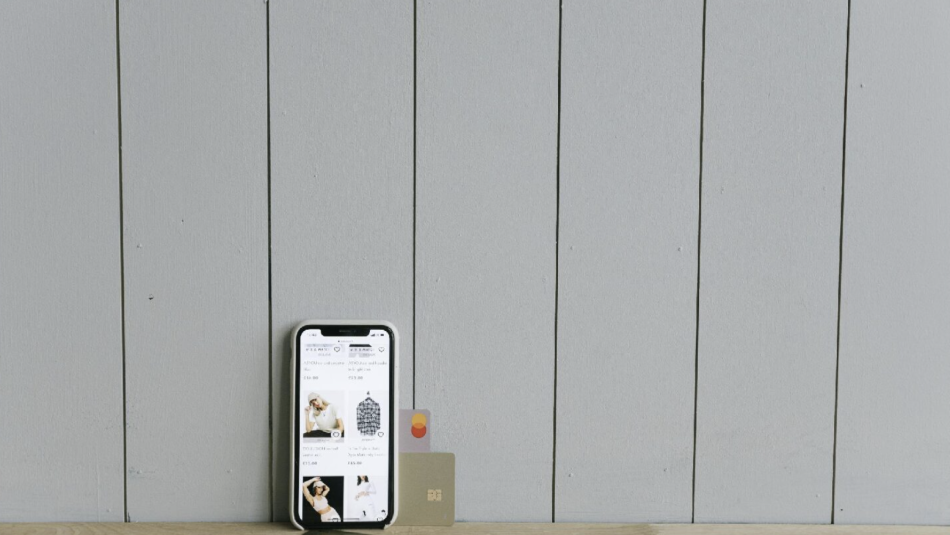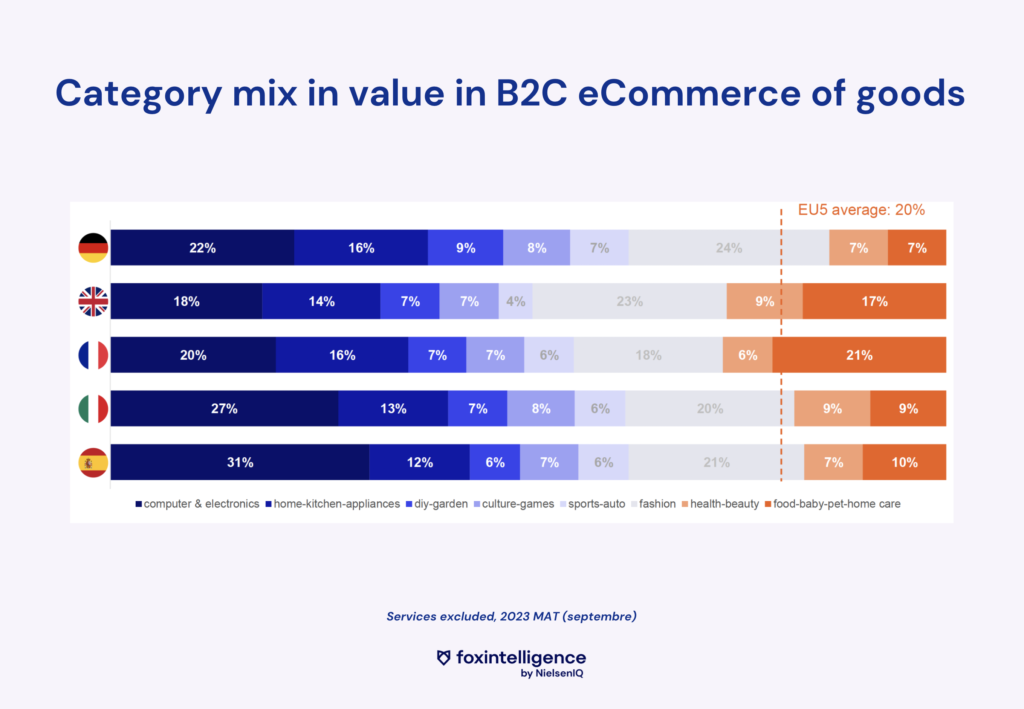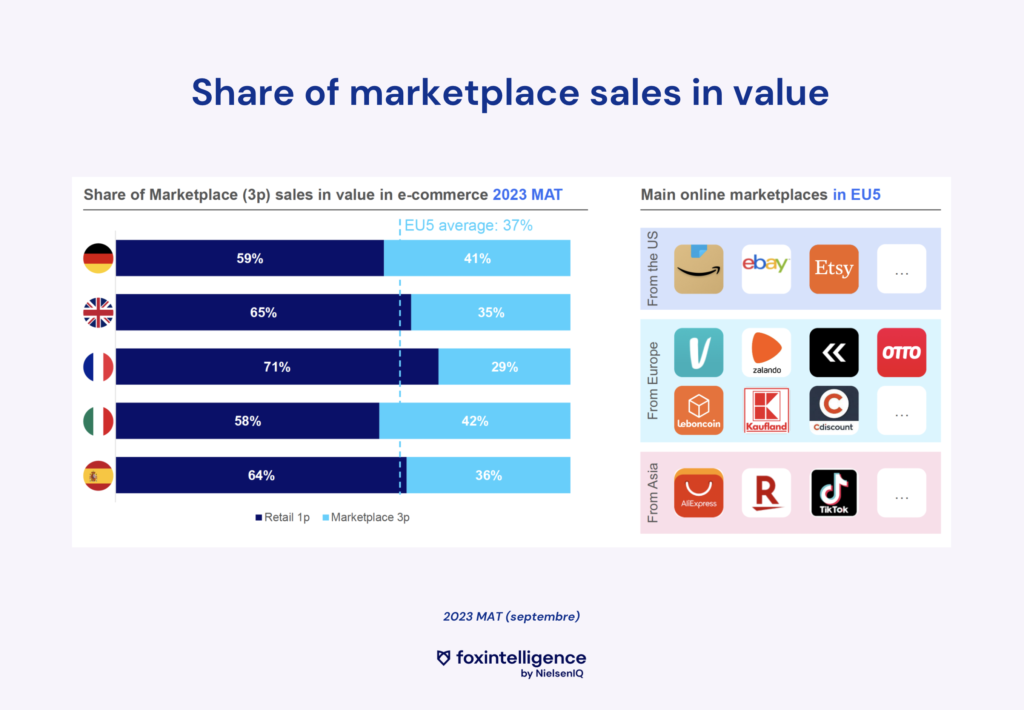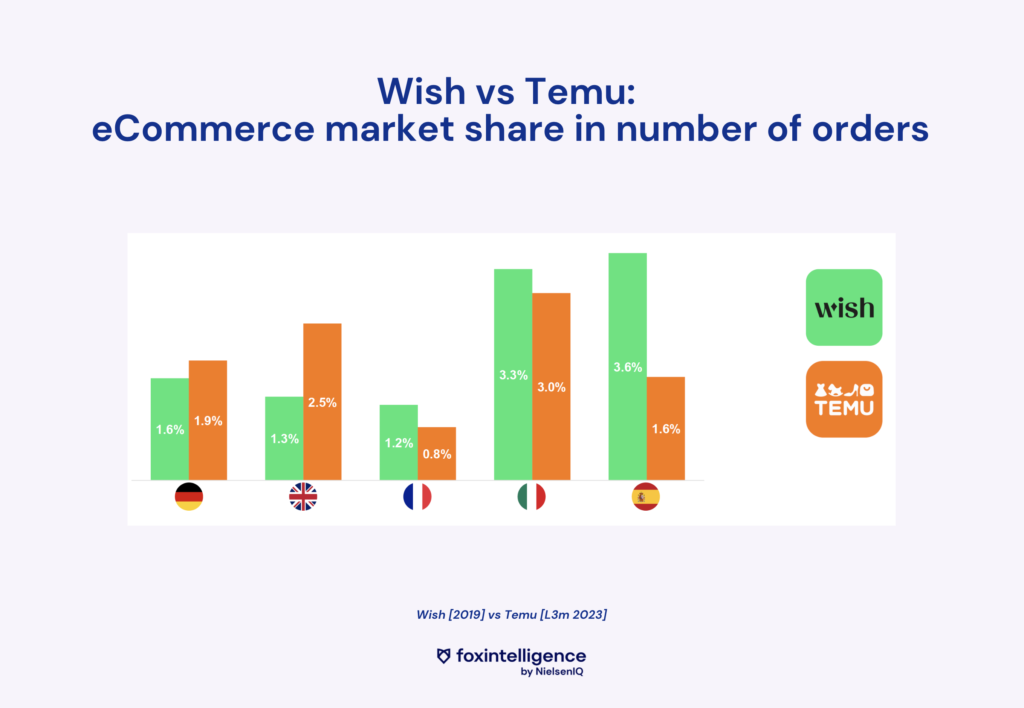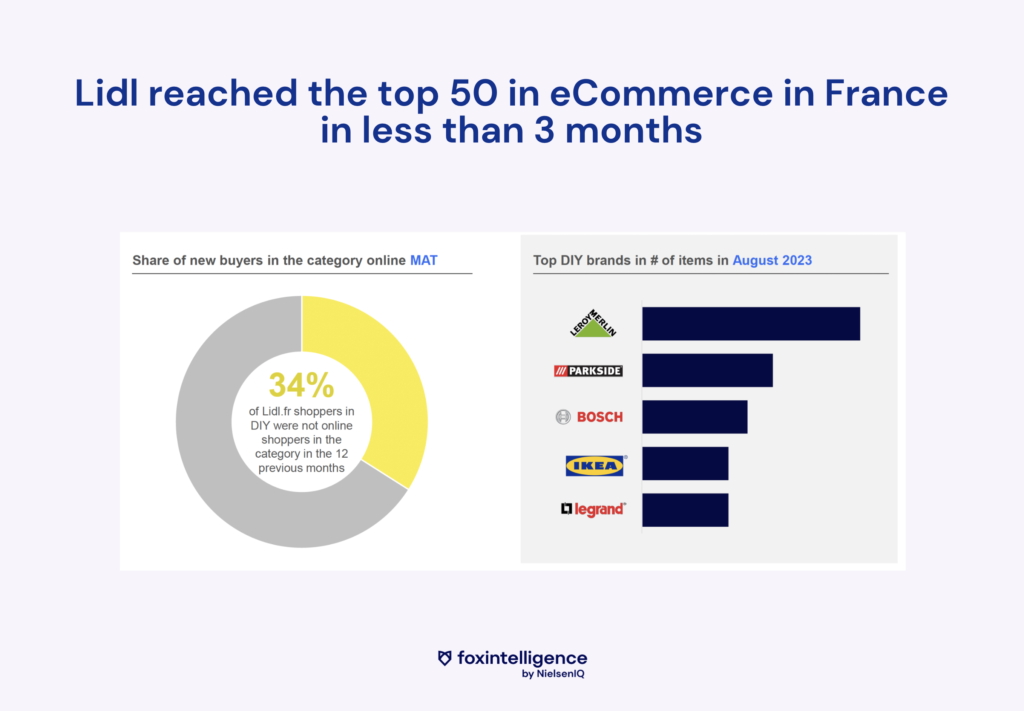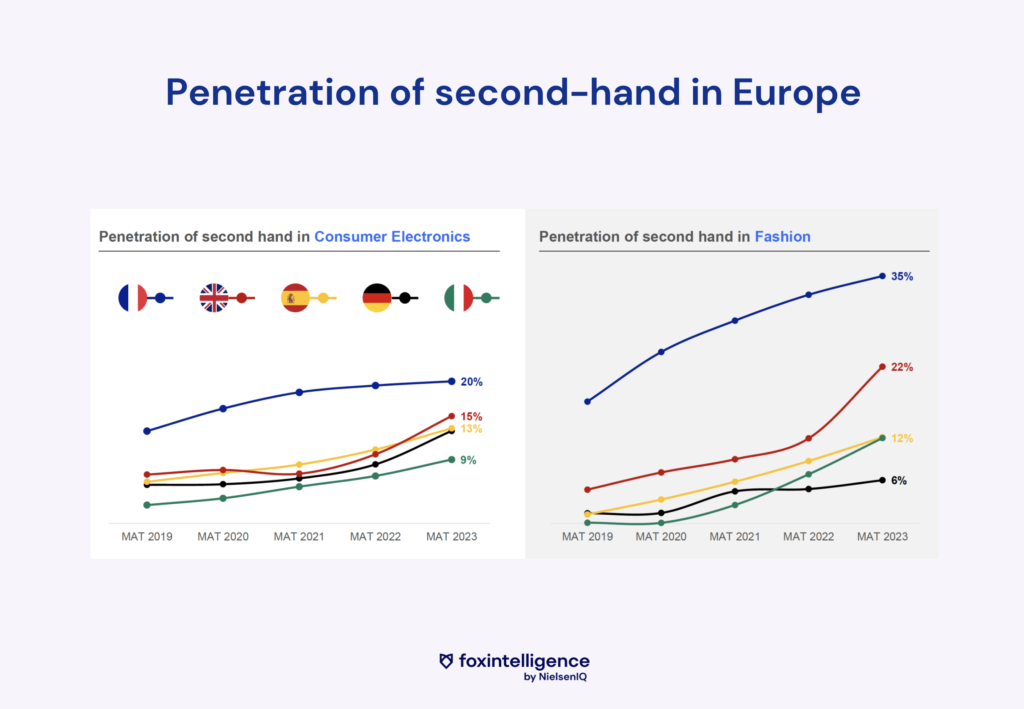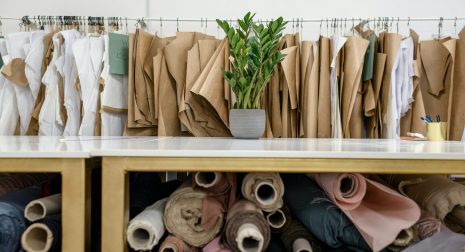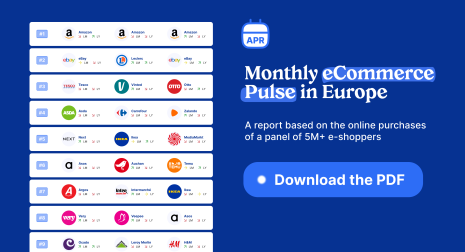Inflation, economic crises, and climate issues are profoundly reshaping consumer habits.
Let’s take a closer look at the new consumption trends among e-shoppers, including:
- The FMCG category gaining market share online in Europe
- Marketplaces playing a more substantial role in sales value
- The arrival of Temu in France
- TikTok Shop and Lidl making their mark in eCommerce
- Second-hand sales surging in Europe
